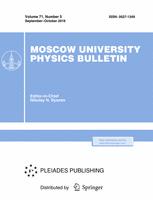For crystals grown under large temperature gradients from melts with seven different compositions, we study the effect of the conditions of crystallization on the formation of growth layers. We investigate the diffraction of light by the growth layers. It is observed that the variations of the refractive index (the optically observable growth layers) have a complicated nature due to the ferroelectric properties of the material. These cause two anomalies to arise in the temperature dependence of the intensities of the diffraction maxima. The lowtemperature anomaly (at T < 100°C) is explained by the pyroelectric charges on the domain boundaries. The high-temperature anomaly (at temperature close to the Curie point) is explained by the existence of variations in the Curie temperature with amplitudes of up to 1°C, which are synchronous with the variations in the composition of the crystal in the growth layers. As the content of sodium oxides in the melt is decreased, the Curie point of the crystals grown from it decreases from 575 to 542°C. The crystals with zero and 90-degree orientations were grown under conditions which were as similar as possible, but the Curie point for the latter orientation was lower by 10-20°C.
Annotation
© 2016 Publisher M.V.Lomonosov Moscow State University
Authors
I.I. Naumova, A.L. A1eksandrovskii and I.N. Leont'eva



